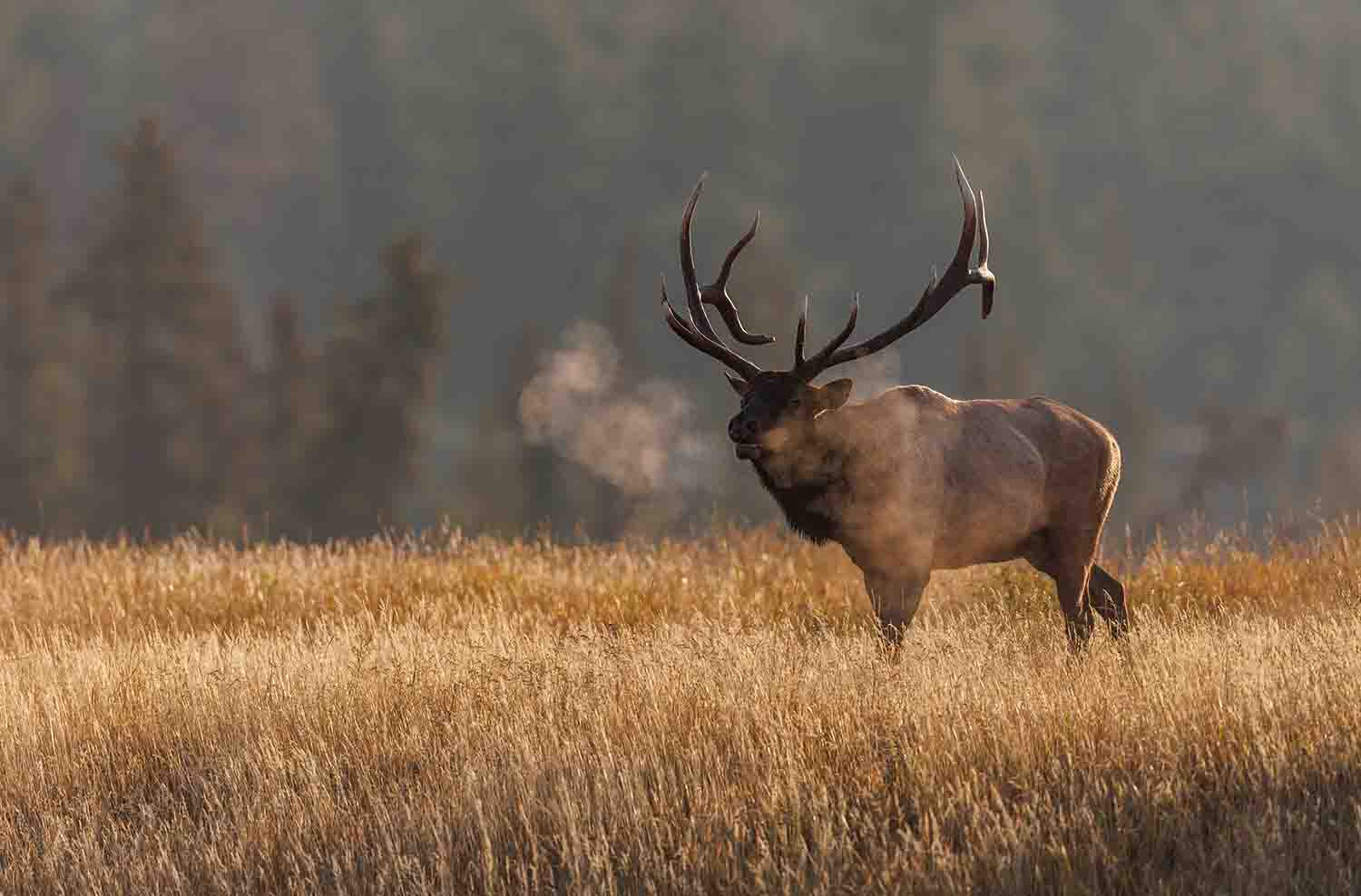Rocky Mountain Elk
About Rocky Mountain Elk
The Elk, Cervus canadensis, became the official state animal by an act of the Utah State Legislature in 1971 (). S.B. 18 was sponsored by Representative Kendrick Harward (R-Richfield). It was signed into law by Governor Calvin Rampton on February 1, 1971.
The idea for the elk and the rainbow trout for state animal and state fish, respectively, came from 4th grade students at Ashman Elementary School in Sevier County. The rainbow trout was the state fish from 1971 through 1997 when it was replaced by the Bonneville cutthroat trout. Amid claims that elk may not be native to Utah, legislators also suggested the Utah prairie dog (Utah native animal), mule deer, mink, mustang, and jokingly the donkey and elephant, the symbols for the Democratic and Republican parties. Elk have been in Utah for all recorded history and played an important role in the cultural history of a number of peoples. Some lawmakers feared that if the elk was made the state animal it would mean that elk could no longer be hunted in Utah. Elk, along with deer, moose, bison, bighorn sheep, mountain goat, bison, and pronghorn are still hunted today.
There are four subspecies of elk in North America: Tule elk (C. canadensis roosevelti) in Central California, Roosevelt elk (C. canadensis nannodes) in the Coastal Pacific Northwest, Manitoba elk (C. canadensis manitobensis) in the northern Great Plains and Canada, and Rocky Mountain elk (C. canadensis nelsoni) in the Rocky Mountain West and transplanted to other locations. Two other subspecies, eastern elk (C. c. canadensis) and Merriam’s elk (C. c. merriami), have been extinct for at least a century.
Rocky Mountain Elk Scientific Classification
Domain: Eukaryota
Kingdom: Animalia
Phylum: Chordata
Class: Mammalia
Order: Artiodactyla
Family: Cervidae
Genus: Cervus
Species: C. canadensis
Subspecies: C. c. nelsoni
Sometimes called wapiti by the Shawnee Indians and scientists of later times, the American Elk was first named by early English colonists. In Shawnee, Wapiti means “white rump” or “white deer.” Elk were once found over most of the United States and southern Canada, but hunters have killed so many of them that they survived only in regions west of the Rocky Mountains. The Rocky Mountain elk is found in the Rocky Mountains and other mountain ranges in the western United States. The largest herds live in Colorado, Yellowstone National Park, and in Washington’s Olympic Mountains. They are also plentiful on most mountain ranges in Utah.
A member of the deer family, the elk lives in close association with the deer and moose throughout much of Utah. Rocky Mountain elks have the largest antlers of all of the subspecies. Only the male elk carry antlers and they can spread more than 5 feet across. Antlers grow during the summer and are shed in the late winter. Elk males are known as bulls, females are cows, babies are calves, and yearling bull elks are spikes. Mature bulls stand up to 60 inches at the shoulder and may be up to 750 pounds. Mature cows weigh around 500 pounds. Elk coats display a dark head color, a lighter body color, and a pale rump. In the summer, their coats turn a lighter auburn color.
Elk are grazing herbivores and feed on a wide variety of plants. Their diet mainly consists of sedges, grasses and forbs. They also eat the twigs and needles of fir, juniper, and other trees and shrubs during harsh winters.
The biggest threats to the species are vehicles, disease, and poachers. Wolves, cougars, bears, and coyotes are among the natural predators of elk.
